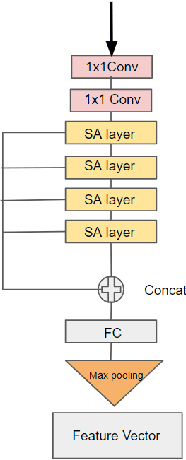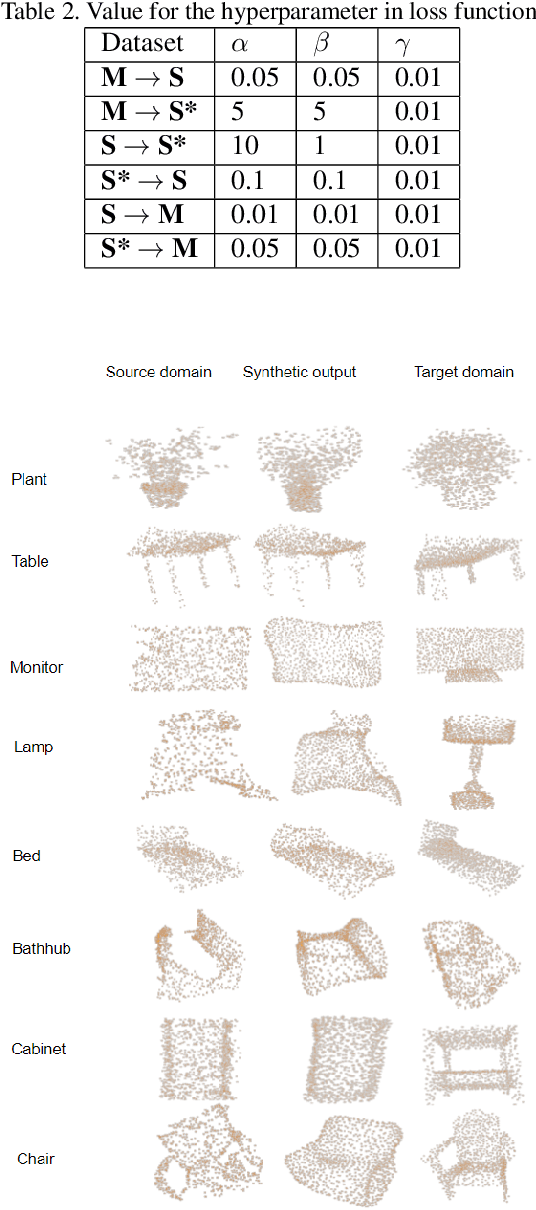Generation For Adaption: A GAN-Based Approach for 3D Domain Adaption with Point Cloud Data
Paper and Code
Feb 26, 2021



Recent deep networks have achieved good performance on a variety of 3d points classification tasks. However, these models often face challenges in "wild tasks".There are considerable differences between the labeled training/source data collected by one Lidar and unseen test/target data collected by a different Lidar. Unsupervised domain adaptation (UDA) seeks to overcome such a problem without target domain labels.Instead of aligning features between source data and target data,we propose a method that use a Generative adversarial network to generate synthetic data from the source domain so that the output is close to the target domain.Experiments show that our approach performs better than other state-of-the-art UDA methods in three popular 3D object/scene datasets (i.e., ModelNet, ShapeNet and ScanNet) for cross-domain 3D objects classification.
 Add to Chrome
Add to Chrome Add to Firefox
Add to Firefox Add to Edge
Add to Edge